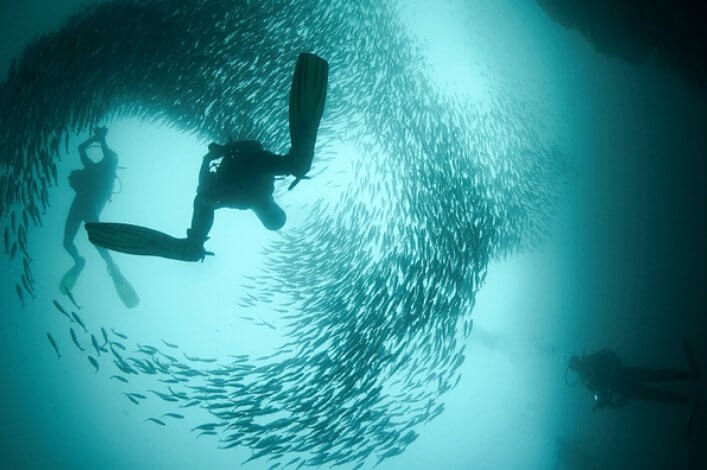
Written in collaboration with Nicolás Moity
How many tourists come to Galapagos to dive? Where do these divers come from? Where are most of the sharks, mantas, turtles and other marine species of Galápagos observed by the divers? How does this information contribute to the management of the areas Protected from Galapagos? These and other questions will be answered by DiveStat Galápagos, a diving activity monitoring tool that allows you to know the demographic characteristics of the divers that arrive to the islands, their experience and diving profile, their levels of satisfaction and includes a visualizer of sightings of megafauna. The project also builds a baseline on dive safety and promotes best practices in the archipelago.
Since March of this year, the Charles Darwin Foundation (FCD) has been carrying out this project in collaboration with the World Wildlife Fund (WWF), the Galapagos National Park Management (DPNG) and the Galapagos Tourism Observatory (OTG).

Galapagos is one of the main ecotourism destinations and is among the top five best dive sites in the world, making recreational diving one of the main marine tourist attractions of Galapagos. It is estimated that 30,000 tourists are divers, or 15% of all tourists arriving in Galapagos annually, which creates a positive impact on the local economy, but in turn, the number of arriving divers could have an impact on the marine environment. This is why for the islands it is very important to have a tool that allows us to know and disseminate good practices that promote the proper management and management of diving in the Galapagos Marine Reserve by the DPNG and in this way ensure that the activity is sustainable.

This innovative tool incorporates a component of citizen science, when recording the sightings of marine species. In this way we can know the sites where we can find different species in greater or lesser quantity and how often, week by week. This way also the operators will be able to sell their product better and the tourists who have diving as their purpose can select the site based on their preferences. In addition, citizen science goes hand in hand with the scientific studies carried out on the islands as it allows scientists to obtain data on the species being studied, for example, their location, breeding sites, and new records, among others.

DiveStat information has been obtained through surveys of tourists and diving centers to learn the different aspects of safety. It is also intended to conduct surveys to health centers and hyperbaric physicians to determine possible improvements in the safety of operations. This pilot study has a long-term vision that seeks to involve the local actors, allowing the baseline of the mentioned indicators to be established so that the DPNG can continue with the data collection in the future and thus have the necessary information for making Management decisions.
The results of the DiveStat project are available online for consultation of operators, guides, visitors, DPNG, NGOs and the community.




